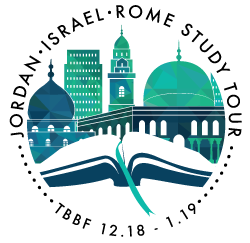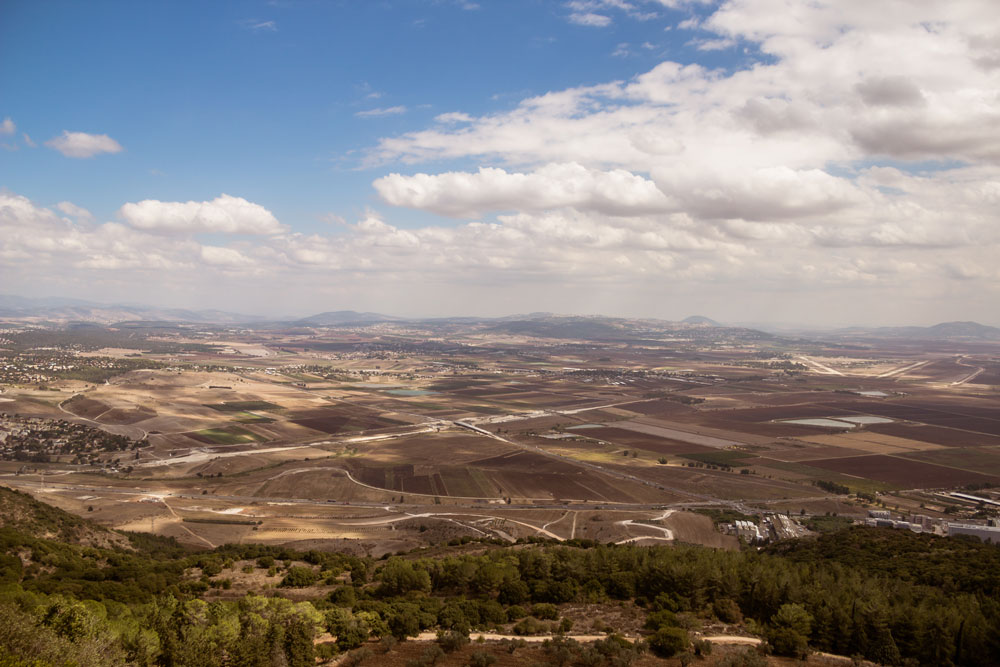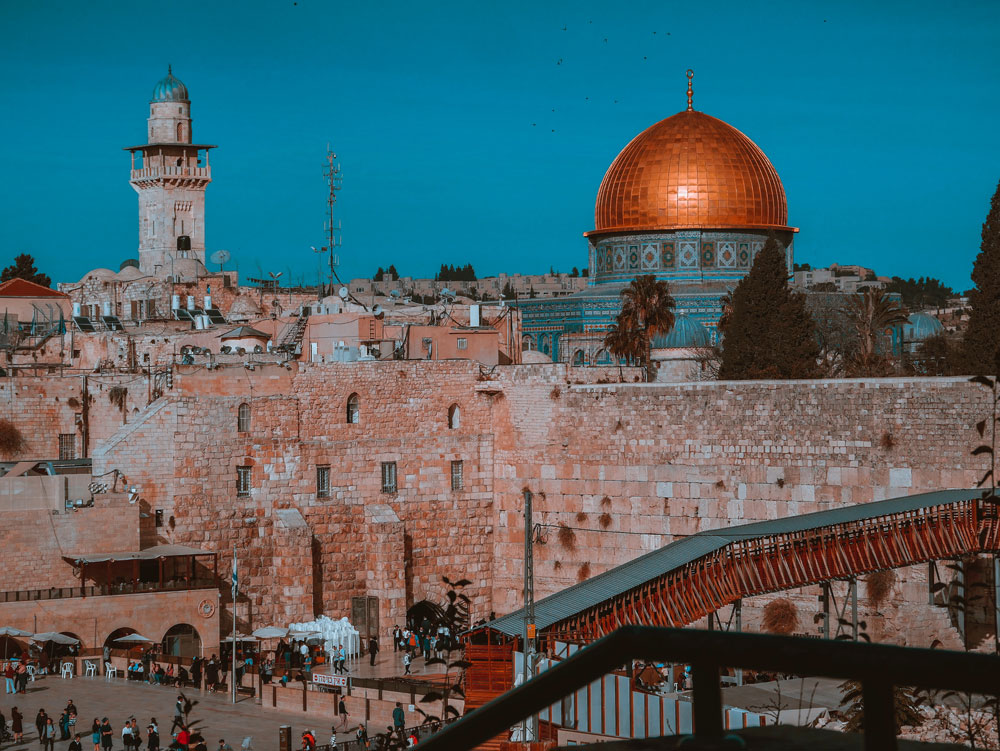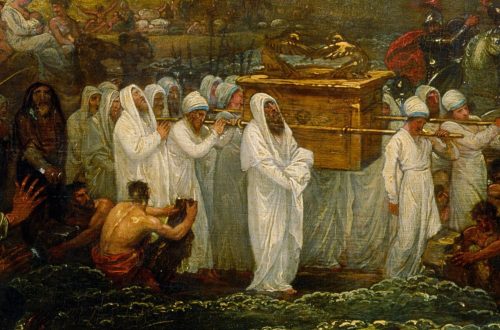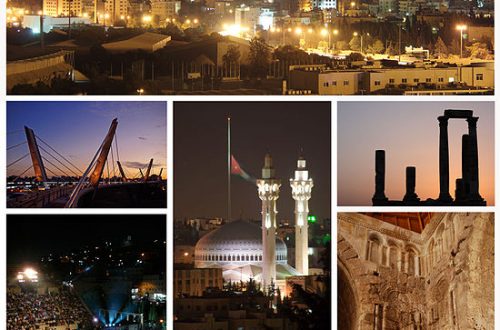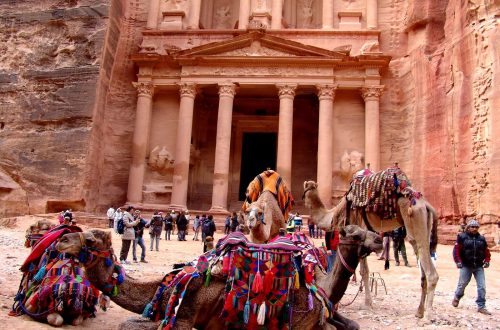Nazareth
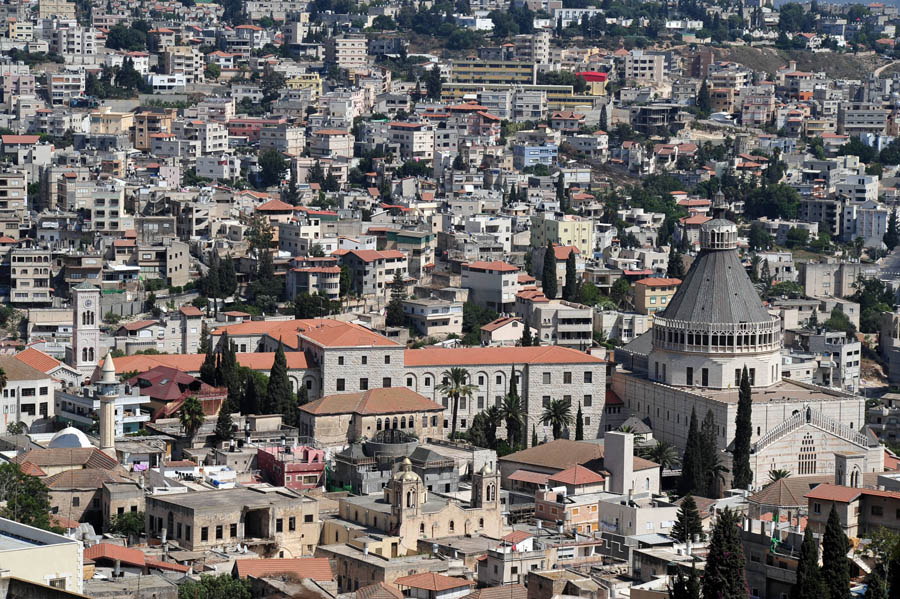
A Byzantine church was built over the place where it is believed that the angel Gabriel announced the birth of Jesus to the virgin Mary. In 1966 the Roman Catholic Church began constructing a new basilica over these remains and today this church is the largest church building in the Middle East. The Greek Orthodox Church nearby is built over the town’s water source.
Jesus spent his boyhood years in Nazareth before beginning his ministry when he was about 30. After moving his home to Capernaum, Jesus returned to teach in the synagogue of Nazareth twice more, but was rejected both times. On one occasion the townspeople were so outraged at Jesus that they tried to throw him off a cliff to his death.
Megiddo
Megiddo is a hill in modern Israel near the Kibbutz of Megiddo, known for its historical, geographical, and theological importance especially under its Greek name Armageddon.
In ancient times Megiddo was an important city-state. It is also known alternatively as Tel Megiddo (Hebrew). Megiddo is a tel (hill or mound) made of 26 layers of the ruins of ancient cities in a strategic location at the head of a pass through the Carmel Ridge, which overlooks the Valley of Jezreel from the west. The name Armageddon mentioned in the New Testament derives from Har Megiddo (Hebrew) meaning Mount of Megiddo.
Megiddo was a site of great importance in the ancient world, as it guarded the western branch of a narrow pass and an ancient trade route which connected the lands of Egypt and Assyria. Because of its strategic location at the crossroads of several major routes, Megiddo and its environs have witnessed several major battles throughout history. One of its claims to importance is the fact that since this time it has remained uninhabited, thereby preserving the ruins of its time periods pre-dating 586 BC without newer settlements disturbing them.
At Megiddo two stable complexes were excavated, one in the north and one in the south. Both complexes could hold from 450-480 horses combined.
Josh. 12:21; Josh. 17:11; 1 Kings 19:5; Zech 12:
Mt. Carmel
The Carmel range is approximately 6.5 to 8 km (4 to 5 miles) wide, sloping gradually towards the southwest, but forming a steep ridge on the northeastern face, 1,810 ft high. The Jezreel Valley lies to the immediate northeast.
Mt. Carmel was most significant in ancient times as a barrier to traffic along the coastal plain. The 1500-foot high limestone mountain impeded armies and merchants traveling to the Jezreel Valley. Biblically, Mt. Carmel is referenced most often as a symbol of beauty and fertility. To be given the “splendor of Carmel” was to be blessed indeed (Isa 35:2). Solomon praised his beloved: “your head crowns you like Mount Carmel” (Song 7:5). But for Carmel to wither was a sign of devastating judgment (Nahum 1:4). This is probably the best view of the area of Elijah’s contest, assuming tradition is correct. The monastery of Muhraqa is at the top of the hill, but tradition places the contest slightly lower near a spring. The crowds of Israelites would have filled the spacious territory around to see whose God would win in the battle between Baal and Yahweh.
Caesarea Maritima
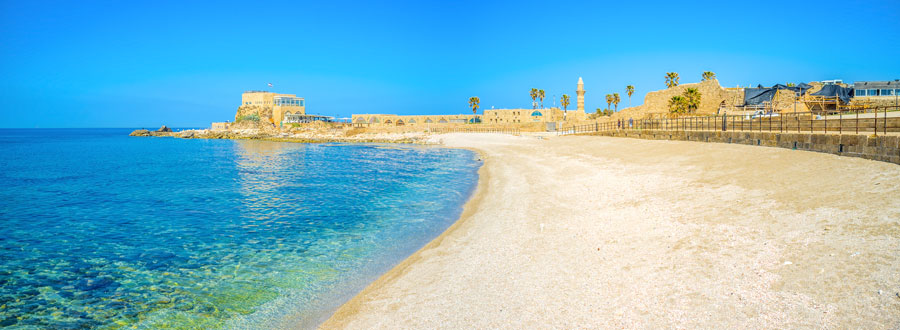
In the attractive Mediterranean seaport of Caesarea Maritima, the apostle Peter baptised the first recorded gentile convert to Christianity — Cornelius, a centurion in the Roman army. When this Italian soldier and his household believed in Jesus they received the gift of the Holy Spirit and began speaking in tongues. This event astonished the Jewish Christians but validated the fact that salvation was for all people (Acts 10).
Caesarea Harbor was the scene of other significant events for Christians:
- It was the headquarters of Pontius Pilate. From here the Roman procurator set out for the Passover festival in Jerusalem, where he sentenced Jesus to death.
- Here the apostle Paul was imprisoned for two years and preached to the last of the Herods, King Agrippa II, who said that if he were to listen any longer to Paul’s persuasion he might become a Christian.
- The city was the home of Philip the evangelist and his four daughters, who were prophetesses. Paul stayed with them when he returned from his missionary journeys.
- At Philip’s home, a prophet named Agabus bound Paul’s hands and feet with his belt, foretelling how the apostle would be handed over to the Romans.
- After Jerusalem was destroyed, Caesarea became the centre of Christianity in Palestine. A Church council held here in AD 195 determined that Easter should be celebrated on a Sunday.
Not to be confused with Caesarea Philippi in Galilee – was founded by Herod the Great on the site of an ancient fortified town. In 22 BC, with no expense spared, he began building a new city and harbour. Massive breakwaters gave safe anchorage to 300 ships, a sewage system was flushed by the tide, and a vast hippodrome seated more than 20,000 people at chariot races. Later an amphitheatre was built to present chariot races, gladiatorial combats, animal performances and theatrical events. Little wonder that Caesarea has been dubbed “Vegas on the Med.”
During the Roman occupation, clashes between Jews and the majority Greco-Syrian population, who supported Rome, were frequent. The desecration of Caesarea’s synagogue and the massacre of 20,000 Jews — in a single hour, according to the historian Josephus — culminated in the First Jewish Revolt, which ended with the AD 70 destruction of both Jerusalem and the Second Temple.
Well-known Christian Fathers who were active in Caesarea included Origen and Pamphilius. The library they built up was second only to that of Alexandria (in the 7th century it held 30,000 works). Eusebius, who became bishop in 314, was both the first Church historian and the first biblical geographer. Without his book of place names, the Onomasticon, many biblical sites would never have been identified.
Today’s visitors can see a restored Roman theatre built to accommodate 4000 and a Roman aqueduct that brought water from the foothills of Mount Carmel. Just inside the theatre is a replica of an inscription carved in stone, bearing the name of Pontius Pilate. The remains of a Crusader walled city, from the 13th century, include a cathedral which was never completed because the vaults below, from an earlier period, were unable to bear the weight.
(from Seetheholyland.net)
Jerusalem
Jerusalem: The city dates back to the 4th millennium bc, making it one of the oldest cities in the world. During its magnificent history, Jerusalem has been destroyed twice, beseiged countless times, attacked at least 52 times, and captured and re-captured over 40 times right down to our own time. The city of Jerusalem is may be the “Salem” of Melchizedek (Gen 14) but is first called by its common name in Joshua 10. Later known as Jebus (Judges 19:10) this Jebusite city was conquered by David (2 Samuel 5:6ff) and it became his capital. Jerusalem is a holy city to Jews, Christians, and Muslims. Many of its sites are operated by all three in an unusual show of harmony.
The Old City (Jerusalem): This is the term used to designate the historical “core” of the modern city of Jerusalem. It is a 1/3 square mile walled area, divided into the Jewish Quarter, the Christian Quarter, the Armenian Quarter, and the Arab/Muslim Quarter. The Old City is home to many important sites including Temple Mount, the Western Wall, the Church of the Holy Sepulchre, the Dome of the rock, and many more.
We will be staying this city for seven days and six nights. It is sure to be one of the most memorable experiences of your life.
Related Biblical References:
- Luke 1:26-38 – Gabriel’s announcement to Mary
- Matt 2:19-23; 4:12-13; Luke 2:39-40,51-52 – Jesus grows up in Nazareth
- Luke 4:14-30; Mark 6:1-6 – Jesus rejected by His home town
- 2 Kings 9:14-27; 23:28-30; 2 Chron 35:20-24 – Death of kings in Megiddo
- Rev 16:13-16; 19:11-21 – The battle of Armageddon
- 1 Kings 18:1-46 – Prophets of Baal vs. Elijah the Prophet of Yahweh
- Acts 8:39-40 – Phillip arrive in Caesarea
- Acts 10:1-48 – Gentiles receive the Holy Spirit
- Acts 12:1-25 – Herod Agrippa dies in Caesarea
- Acts 23:23—26:32 – Paul imprisoned in Caesarea
